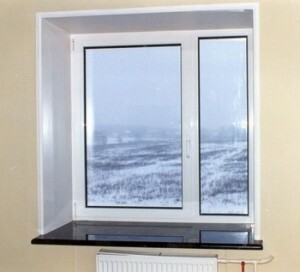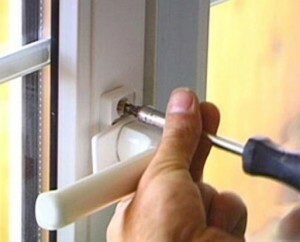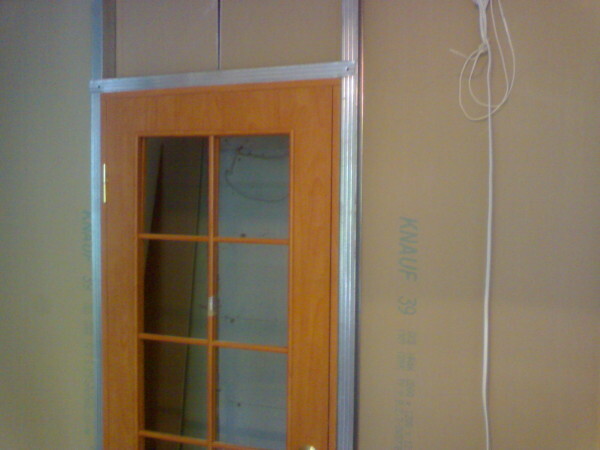How to make slopes on the front door
The stage of the door installation has come to an end and now you can start working on finishing the slopes. If the entrance door is installed by professionals, then the slopes will have to be mounted on their own. To work later proved to be of high quality, it is necessary to understand which slopes will be more suitable in terms of the design of the room. If you are confident in your choice - boldly get to work. For the most clear text will accompany the photo.
Finishing of the slopes of the doors: the finishing stages of the
In order for the installation of the doorways to be most clear, the main steps for processing the slopes of the door are:
- Sealing the door box.
- Surface cleaning.
- Plastering works.
- Facing works.
Step 1. Sealing
The very first stage is the sealing of the entrance door frame, not only from the outside, but also from the inside. Reliable sealing of the doorway at the initial stage is a necessity, which as a result will help keep the house or apartment warm and protect from extraneous noise. Thus, the first stage is the most important in the entire installation process of the slopes, since it provides the thermal insulation of the room.

- Prepare an opening near the box, for which we carefully clean it of dust and debris. For the best cleaning of the opening, it can be vacuumed. This is necessary to better bond the insulation to the surface.
- After that, the insulation is made. Consider two options:
- Using a mounting foam. Application of foam is accompanied by wetting the surface with water, for which you can take the spray. After drying the foam, it must be carefully cut with a sharp knife.

Please note: foam as a result of falling on a flat plane increases several times, which threatens to damage the front surface. Therefore, do this work with care.
- With the use of a heater. The most suitable for use is a synthetic insulation, as it practically does not change shape and eventually does not sink, which is typical for many natural components. Before placing the material in the holes, it is cut into several parts. Note: the material does not need to be pushed with force, neat placement is welcomed. Do not squeeze to avoid strong deformation, otherwise it may result in loss of its properties. But, nevertheless, the material should lie tightly.
Step 2. Surface preparation
- Using a brush for metal products, the plane is cleaned of the old coating, all impurities and irregularities of the assembly foam and plaster are removed, which will further interfere. To get rid of roughness it is possible and by means of a spatula, iron scraper or perforator.
- We inspect the surface for darkening or fungus. If necessary, the surface is treated with an antiseptic that relieves the fungus. Even if nothing is on the surface, treatment is done - this is a preventive measure.
- After cleaning, the surface is treated with a contact primer to ensure that the slope is resistant to cracks and durable. Drying of groundwater requires at least 3-4 hours. Preference is given to liquids with a deep penetrating ability.
Step 3. Plastering
The most frequent method of finishing is coating the surface with plaster. This is an advantageous material, besides finishing work with it is possible for everyone. After insulation work and preparation of the surface, it is necessary to carry out the work in this order:
- Mix the mortar containing two ingredients - cement and sand, with their ratio strictly 1: 3.In a container with a flat bottom you need to fill up the cement, mix it with sand and mix it on a dry one. So the substances are mixed evenly.
- Simultaneously stirring, water is added to the container.
- In order to achieve a homogeneous mass, you need to mix the contents with a drill with a nozzle.
Please note: Sand has the property of settling and to avoid this, detergent is added to it. This ensures that the mixture remains homogeneous for a long time.
- At the beginning, a narrow spatula is used to apply the mortar. It is not recommended to apply a large layer, it is better to apply a few layers a little. The jamb should be putt at an angle.
- After filling the main part, it is necessary to take a wide spatula that exceeds the width of the slope along the length. The solution is superimposed on the plane by a thin layer.
- The next step is to grout the mortar with a float, which is wetted periodically with water.
- When a deeper shell enters the problem area, a solution is added.
- The plane must then dry completely. Next, a primer coat is applied to the surface and painting is carried out. It should be noted the practicality of such slopes, because they are subject to repair. Coloring is performed in the most suitable color.
Step 4. Finishing the slope
Before you enter the slope on the front door, you need to decide on the type of finish. The most popular materials: wood, plasterboard, plaster and plastic. For each type of material, the algorithm for finishing works is somewhat different.
In any case, for the fastening of these materials you need plates matched to the size. Fasteners are made on the frame, that is, wood rails, installed along the entire width and length of the slopes.
Important: at the very beginning of work, the wood surface is lined, for which antiseptics are used that can prevent the appearance of rot and fungus. The material on which the slats are installed must be dried.
So:
- Using a tape measure, the perimeter of the bars is measured, after which the required size is cut off.
- A connection is made to the main plane by means of a perforator. After the hole is made, the fastening is carried out on the dowels.
How to make slopes on the door - the most common materials
The fastening is done and it's time to do the facing. For different materials, the installation principle is practically the same, but there are some nuances.
- If a thick layer of the mixture is required, it is advisable to use a gypsum board for fastening. Such material is connected to the plane by means of self-tapping, which is accompanied by exposing the cap several millimeters to the surface of the drywall. The final stage of the cladding is puttying the panel and painting it.
- Additions to the door will be MDF panels, which are fixed using self-tapping screws. Taking a drill, you can make several holes, in which the samorez drill below the plane. In order to close the holes, plastic plugs are purchased in advance. Be careful when taking measurements!
- Another material for processing - laminate, attractive in appearance. For the facing, the dimensions are taken for the beginning and the plates are cut from the laminate sheet. Fastening occurs with the use of self-tapping screws.
In addition, often for slopes choose and materials such as plastic, wood, plaster. Wood is the most popular material, harmoniously blending into any design of the room.
The main thing, do not forget that after the fastening of any plate, the holes on the box side are closed. Suitable for this are corners of wood or plastic, which you can buy at any construction store.
Thus, the work on installing slopes is not so complicated. The only thing is to do everything without hurrying up and observing simple rules.



